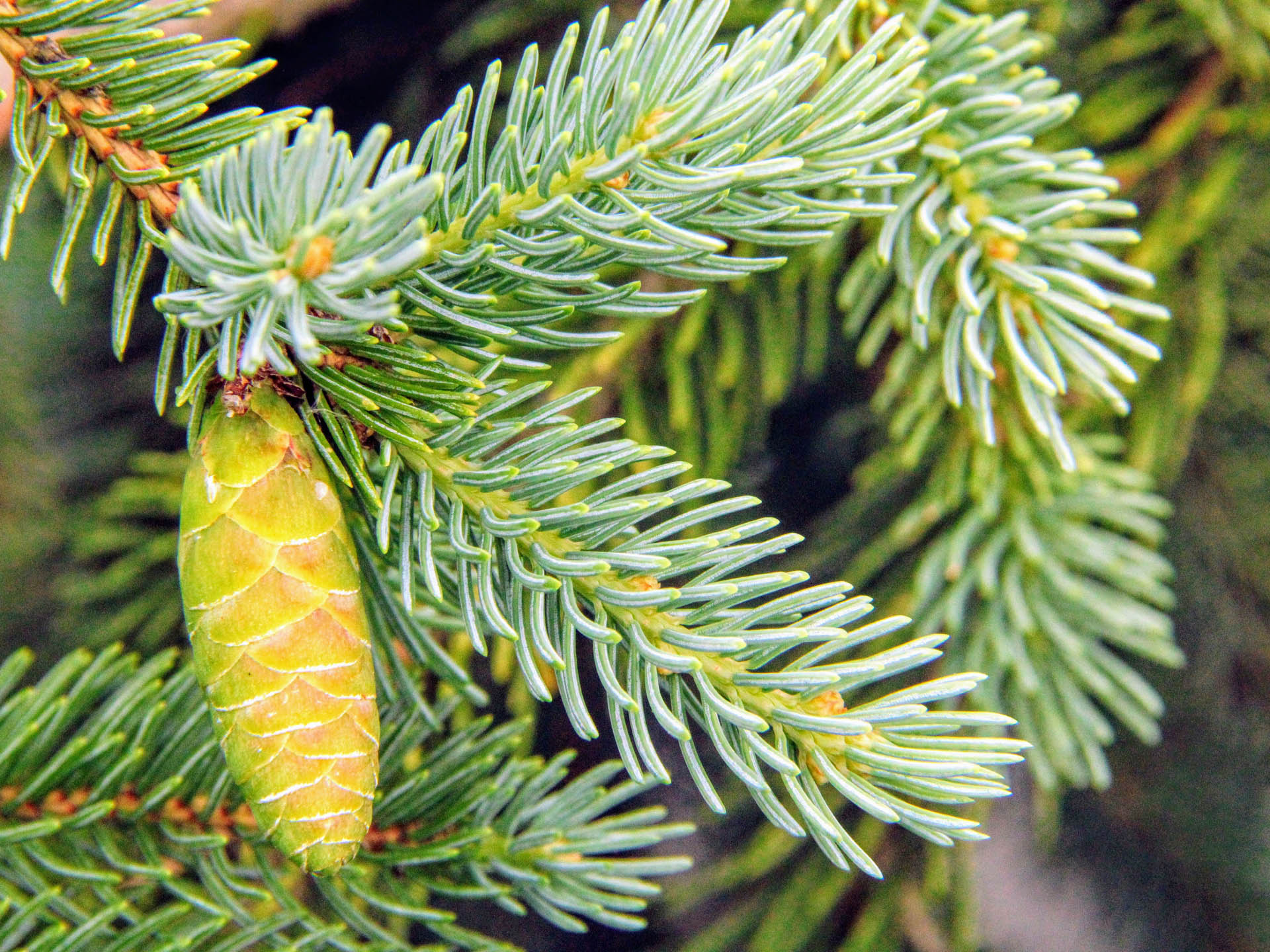Picea glauca ‘Skinny Blue Genes’, also known as the Black Hills white spruce, is a distinctly narrow cultivar of the native white spruce species. With its rich blue foliage and tightly compact form, this exceptional variety provides year-round beauty and versatility in the home landscape.
Picea glauca is a coniferous evergreen tree native to the northern regions of North America. The species is known for its pyramidal form prickly needles and its ability to withstand cold climates. ‘Skinny Blue Genes’ is a cultivated variety bred by Blue Point Nurseries in Oregon. It was patented and introduced to the market in 2018.
This cultivar was selected for its incredibly narrow growth habit, only reaching 8 feet wide at maturity, compared to the 30-40 feet width of the species. It also exhibits a striking steel blue needle color, adding unique visual interest. The trademarked name “Skinny Blue Genes” directly reflects these coveted attributes.
Mature heights reach 25 feet tall, with moderate growth rate. Hardiness ratings are excellent, surviving temperatures as cold as -30°F when established. Overall, its cold tolerance, compact size, and stunning coloration make ‘Skinny Blue Genes’ well-suited for a range of garden applications
Key Features and Attributes
Picea glauca ‘Skinny Blue Genes’ provides the landscape with:
-
Year-round evergreen beauty with rich blue needles.
-
Narrow, columnar form only reaching 8 feet wide.
-
Moderate growth rate to a mature height of 25 feet.
-
Highly adaptable and cold hardy to zone 2.
-
Good resistance to drought, heat, pollution, and deer browsing.
-
Low maintenance requirements.
Its incredibly narrow profile makes this a novel selection for accenting vertical landscapes. The vivid blue needles also add striking color. This variety works beautifully as a slim exclamation point in the garden, providing elegant structure throughout the seasons.
##Ideal Uses in the Landscape
Thanks to its versatile growing habits, ‘Skinny Blue Genes’ can be utilized in many different settings:
-
Small urban gardens, since it takes up little space.
-
Tight planting areas like along foundations, fences, and driveways.
-
Accenting vertical landscapes as an exclamation point.
-
Providing evergreen structure and winter interest.
-
Mixed borders and rock gardens.
-
Grouped together for a narrow screen or hedge.
-
Large planters and containers.
Its upright columnar form also naturally draws the eye upward, making a dramatic vertical statement. This lends well to minimalist style landscapes. The steel blue needles beautifully contrast with green foliage plants and pastel blooms.
Growing Conditions
Picea glauca is adaptable to various soil types and pH levels. It thrives in full sun but also tolerates partial shade. A few cultural requirements include:
-
Well-draining soil – avoid soggy conditions.
-
Average fertility and organic content.
-
Moderate watering when establishing, then tolerates some drought.
-
Shelter from drying winds and winter storms.
-
Prune only minimally to retain its narrow habit.
When sited properly, it is pest and disease resistant. The main hazards are wind damage, extreme cold, and root rot if overwatered. Proper care when young will ensure healthy maturation.
Buying Tips
When shopping for Picea glauca ‘Skinny Blue Genes’, look for:
-
Plants grown from licensed and trademarked cuttings.
-
Compact, pyramidal form without central leader loss.
-
Rich steel blue color without yellowing.
-
Clear trunks free of mechanical damage.
-
Healthy root systems with light feeder roots.
Purchase in spring or fall and plant into a pre-dug hole twice as wide as the root ball. Water at planting and as needed until established. Apply a 2-3 inch mulch layer to help retain soil moisture and reduce competition from weeds and grass.
The Final Takeaway
For gardens desiring a narrow vertical accent, Picea glauca ‘Skinny Blue Genes’ is a spectacular choice. With its icy blue evergreen needles and exceptionally slim profile, this Black Hills white spruce variety provides year-round beauty and elegant structure. Stunning blue color, cold hardiness, deer resistance, and adaptability make this a standout selection among other conifers. Any landscape, from urban lots to rural acreage, can benefit from the uniquely narrow beauty of ‘Skinny Blue Genes’.

Picea glauca var. densata
- Lush blue needles
- Narrow, conical growth habit
- Ideal landscape specimen
- Height: 20-25 ft
- Spread: 8-10 ft
- Zone: 2-8
Spruce Bonsai Care (Picea)
FAQ
What is skinny blue genes spruce?
Skinny Blue Genes has a dense, conical, narrow growth habit with rich blue needles. It has good cold, drought and deer tolerant. Makes an excellent landscape specimen.
How big does Picea glauca get?
This tree typically grows 60-80′ tall (less frequently to 140′ tall) with a cone-shaped crown. It diminishes in size to low, shrubby forms near tree line in northern Canada. Blue-green needles (to 3/4″) on small woody pegs have sharp tips. Needles are pungently aromatic when crushed.
Why are some blue spruce bluer than others?
The blue color of blue spruce needles is caused by epicuticular waxes on the needles that reflect specific wavelengths of light. The more wax on a needle, the bluer it is. Neither the amount of wax nor the blue color is uniform across the species.
What is the lifespan of a Picea glauca tree?
The crown of the white spruce is broad and conical, giving younger trees a pyramidal silhouette, which matures into a column-like shape. The white spruce is one of North America’s hardiest trees and can live up to 300 years old, although 100 to 250 years is the typical lifespan.
